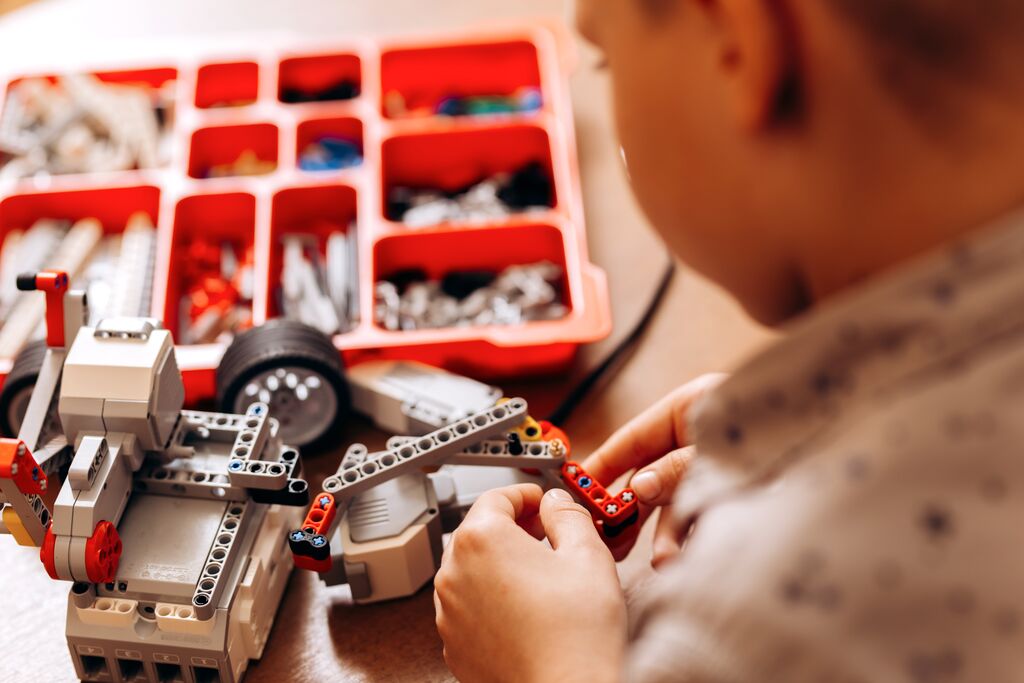
The Role of Technology in a 21st-Century Preschool
Technology has transformed every aspect of our lives, and education is no exception. While education, and in particular early childhood education, is a field where human connection, educators’ understanding of the nuances of child development, and building nurturing relationships with children are of paramount importance and cannot be replaced by technological advances, technology does have an important role in 21st-century preschools.
While some may be skeptical about introducing technology to young learners, research suggests that it can significantly enhance early childhood education and support children's early development when used appropriately. This blog entry explores how technology benefits children’s early development, preparing them for the future.
Engaging and Interactive Learning Tools
Teachers now have access to a variety of digital tools to create fun and engaging lessons. Interactive whiteboards, digital storytelling apps, coding robots, and screen-free coding games make learning exciting while complementing traditional hands-on activities. These tools help children explore new concepts in creative and meaningful ways.
Creating Dynamic Classrooms with Technology
Preschool classrooms are evolving into active learning spaces where children can explore and create using technology. However, technology should be used in moderation and alongside traditional teaching methods. It should always be developmentally appropriate, purposeful, and guided by educators to ensure a well-balanced learning experience.
How Kido Integrates Technology in Early Learning
Kido International Preschools use technology thoughtfully to enhance learning while keeping hands-on experiences at the core. Through programs like K-STEM, children are introduced to coding, computational thinking, and problem-solving. Kido’s approach blends traditional teaching methods like Montessori, Waldorf, and Reggio Emilia with modern technology to enrich learning.
How Technology Supports Child Development
Cognitive Development
- Digital learning games and apps help children improve problem-solving and logical thinking.
- Smartboards and interactive activities reinforce early literacy and math skills.
- Technology makes complex concepts easier for young learners to understand.
Encouraging Creativity
- Digital drawing, music-making, and animation apps allow children to express themselves creatively.
- Augmented reality tools provide fun and immersive learning experiences.
- Instead of just watching content, children can create their own digital projects.
Building Language and Communication Skills
- Bilingual apps, voice-recognition tools, and digital books help children develop language skills.
- Technology offers interactive ways to practice pronunciation and vocabulary.
- Digital tools enhance traditional literacy activities by making learning more engaging.
Social-Emotional Learning and Collaboration
- Interactive tools encourage teamwork and group activities in the classroom.
- Coding robots and STEM-based apps promote problem-solving and cooperation.
- Social-emotional learning (SEL) tools help children understand emotions, empathy, and resilience.
Developing Motor Skills and STEM Readiness
- Screen-free coding robots and interactive digital tools improve fine motor skills.
- Early exposure to programming concepts builds a foundation for future STEM learning.
- Hands-on tech activities teach children cause-and-effect relationships through play.
Additional Benefits of Technology in Early Learning
Boosting Engagement and Motivation
- Young children are naturally drawn to interactive technology.
- Smartboards, augmented reality, and digital games keep children engaged in learning.
- Technology helps children who struggle with traditional learning methods.
Personalized Learning for Every Child
- Digital platforms adjust difficulty levels based on a child’s progress.
- Personalized learning ensures every child gets the right level of challenge and support.
- Adaptive tools help build confidence and independence in young learners.
Building Digital Literacy from an Early Age
- Early exposure to technology teaches children how to use digital tools responsibly.
- Learning basic coding and information retrieval fosters curiosity and problem-solving.
- Developing digital fluency prepares children for future education and careers.
Enhancing Communication Between Schools and Families
- Digital tools allow teachers to document progress and share updates with parents.
- Learning apps help families stay involved in their child’s education.
- Technology enables more collaboration between educators, children, and parents.
So, The role of technology in 21st-century preschools is undeniably significant, offering diverse learning opportunities that enhance engagement, creativity, and foundational skill development. When used intentionally and in moderation, digital tools complement traditional teaching methods, ensuring that early childhood education remains holistic, interactive, and tailored to each child’s needs. From cognitive and language development to social-emotional learning and digital literacy, technology supports multiple developmental domains, preparing young learners for the ever-evolving digital world. At Kido, we embrace a balanced approach that integrates technology seamlessly with hands-on learning, fostering curiosity, problem-solving, and creativity.